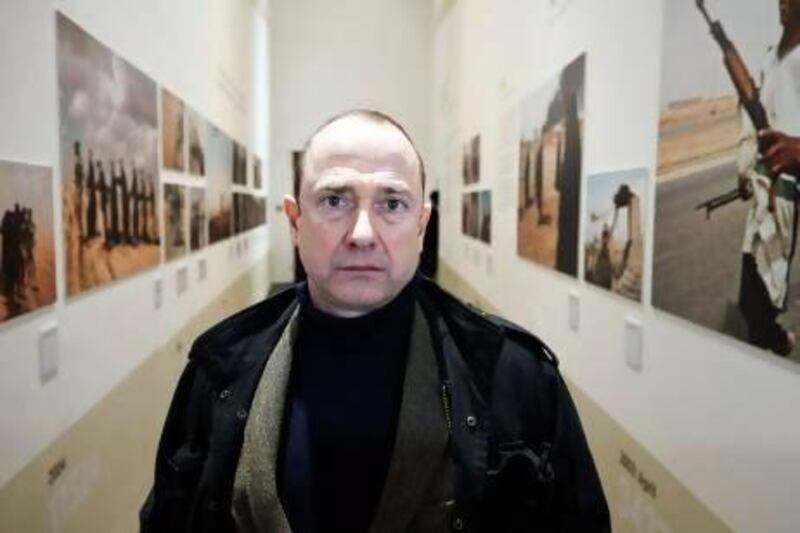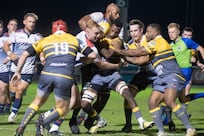The photographer Sean Smith remembers the feeling of "impending doom" he witnessed 10 years ago this week as he captured an Iraq on the brink of invasion for The Guardian newspaper. It's as clear in his mind as it was a decade ago. "So if you ask me how I feel about the Iraq war now," he says, "I can tell you quite easily. I feel quite angry about the foreign policy that led to it. I'm not a pacifist, but to me it's been shown to be wrong."
Across Britain this month the mood is one of, if not always recrimination, then solemn remembrance of the invasion of Iraq. Smith's photographs, a stunning insight into a country where Iraqi civilians were forced to coexist with a foreign military presence, are collected in a thought-provoking exhibition at the Imperial War Museum in Manchester. Elsewhere, across nine UK cities, the Reel Iraq festival explores the contribution of culture to Iraqi life in a time of conflict via film, music, poetry and art. Next month, an evening of commemorative new plays, music, poetry and comedy from UK and Middle Eastern artists will be held at London's Royal Court.
In the Imperial War Museum, the tone is sober, any celebration is that of the endurance of the human spirit. In an adjoining room to Smith's photographs sits Jeremy Deller's famous Baghdad Car, the remains of a vehicle destroyed in a suicide bombing at the book market in Al Mutanabbi Street. The tangled mass of metal is crumpled like paper but Deller insists his intervention has been minimal; in fact the Turner Prize-winning artist refuses to call it art at all.
Smith is not sure whether his images are "art" either. He was a photojournalist for The Guardian and, he says, simply "took shots of a brutalising time", both independently and then embedded with the American military. There is a quote of his at the beginning of the exhibition: "There is no way I can tell the whole story. But what I can do is show the gap between rhetoric and reality."
"It became clear pretty rapidly that there was a huge difference between what was being said in Washington and London and what it was actually like there," says Smith, who first arrived in Iraq three months before the invasion. The images from this time are startling in their normality, documenting football matches, weddings, horse-racing meets.
"We were told that these events were stage-managed by the authorities but it wasn't quite like that," he says. "I wanted to show that Iraqi society was in some way functioning despite the unreal air. Even if the people you spoke to didn't support Saddam, they didn't welcome the idea of an invasion."
And when the invasion came, Smith recorded in chilling detail the chaos and mutilation of war. He returned in 2005 embedded with the American military - and if anything these shots really tell the story of Iraq.
"The way I looked at it, the Americans were quite a large part of the story, and if you were prepared to follow them, then things would reveal themselves," he says. "I didn't see my role as a propagandist. I never had my pictures censored by the Americans."
Some of Smith's most powerful images reveal the incongruities of the situation. An Iraqi woman weeps; behind her an American soldier is crouched in readiness for battle. A boy jumps carefree into a river as a balaclava-clad man scans the surrounding area in scorching heat. A child rescues a pet rabbit from his bombed neighbourhood.
"I don't know whether I specifically looked for incongruities in my pictures," Smith says. "In fact, the overwhelming feeling was that the whole situation was incongruous. Insane, actually. Yes, I was capturing that woman's grief and I had to guard against voyeurism, of course, but this was a public event paid for by people's taxes. It was done in the name of all of us. I might have been intrusive, but how else could you hold politicians who made the decisions to account?"
For Smith the imperative was to tell the story of Iraq as it was then rather than have his images held up as masterful examples of the photographic form 10 years later. Nevertheless, his most famous picture, an image of US Marines taking a line of blindfolded detainees in for questioning, won awards and is stunning in its composition.
"I can't create these pictures. I couldn't ask detainees to stand and pose," he says. "But with that one, as they walked across me, I was immediately reminded of a famous photograph from the First World War, and I took the shot in two frames. That I recalled such an image hopefully emphasises the power photographs can have across decades and centuries."
Iraq: Photographs by Sean Smith is at the Imperial War Museum, Manchester until 2014. Visit www.iwm.org.uk
Follow us
[ @LifeNationalUAE ]





